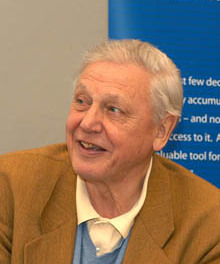Jurassica facts for kids

Jurassica was a big idea for a visitor attraction in a disused quarry on the Isle of Portland. This island is near Weymouth in Dorset, southern England. The project was inspired by the famous Jurassic Coast, which is a World Heritage Site.
Jurassica was planned to be an underground "geological park." It would have shown visitors the amazing prehistoric world. The chosen spot was Yeolands Quarry, a very deep and wide quarry that stopped being used in the 2000s. It's on the eastern side of Portland, close to The Grove village.
Contents
What Jurassica Was Planned To Be
The plans for this exciting project, costing around £85–90 million, were first shared in late 2013. The idea was similar to the Eden Project in Cornwall, which was built in an old clay pit.
Exploring Prehistoric Life
Jurassica aimed to display hundreds of incredible fossils. These would include dinosaurs, ancient sea reptiles, marine creatures without backbones, and prehistoric plants. There were also plans for an aquarium. Another cool idea was to have large tanks with moving models of ancient sea monsters.
A Journey Through Time
The park also wanted to take visitors on a journey back in time. Imagine "flying around the Earth" 140 million years ago! The whole park was designed to be covered by a huge, clear dome made of glass and steel. This dome would have been 350 feet wide. It was described as looking like a "spider web" and almost invisible from outside.
Eco-Friendly Design
Jurassica was planned to be the world's first large visitor attraction that would remove more carbon dioxide than it produced. It aimed to generate its own power using solar panels. The project also hoped to bring back a special bus service that was used during the 2012 Olympics in Weymouth. Portland was seen as the perfect spot because it's right in the middle of the Jurassic Coast. If built, Jurassica was expected to create 200 jobs for local people.
How the Idea Started and Who Supported It
The idea for Jurassica came from a science journalist named Michael Hanlon. He grew up in Dorset and loved searching for fossils along the coast. Many people, both locally and across the country, supported the project.
Famous Supporters
Sir David Attenborough, a well-known naturalist and broadcaster, became a patron of Jurassica. Sir Tim Smit, who created the Eden Project, also became a trustee. The first drawings of the site were made by Renzo Piano, a famous architect who designed The Shard in London. The engineering work was planned by the same team who worked on the Eden Project and the Sydney Opera House.
Michael Hanlon said the idea was "very big and ambitious." He hoped Jurassica would be a "spectacular world-class visitor attraction." He also saw it as an educational charity that would be a central point for the Jurassic Coast World Heritage Site. Sir David Attenborough shared his excitement, saying his own love for science began with fossils. He felt the Jurassic Coast was very important for history and for Britain, as it was where the study of fossils began.
Funding and Challenges
The Jurassica team looked for money from different places. They hoped to get funding from the UK Heritage Lottery Fund and help from the Natural History Museum, London. Michael Hanlon also mentioned they hoped for "significant private investment."
Museum Involvement
Michael Dixon, the director of the Natural History Museum, visited the proposed site in July 2013. He was very keen to be involved. He said the museum would lend some objects for display. They also planned to use the latest technology, like animatronics, to make the visit exciting.
In late 2013, Hanlon shared that the idea for the park grew thanks to support from scientists and business leaders. A possible partnership with the Natural History Museum would have included lending Jurassic-related items. They also talked with the Royal Society and Kokoro, a Japanese company that made the moving dinosaur models for the museum. By this time, over 60 businesses in Dorset also supported the project. However, in 2015, the project did not receive funding from the National Lottery.
Future Plans and Transport
The construction of Jurassica was estimated to take three to five years. If funding had been secured, the goal was to open the attraction in 2019–2020. The plans aimed to attract 700,000 visitors each year. Hanlon suggested that a ticket for two adults and two children might have cost up to £70.
One challenge recognized by the project's supporters was transport. One idea considered was using buses from a large car park built for the 2012 Olympic sailing events in Weymouth. Another related project for Portland was the Mass Extinction Monitoring Observatory. This was planned as a monument to creatures that have disappeared from the planet. It would have been located on the west side of the island at Bowers Quarry.
See also


